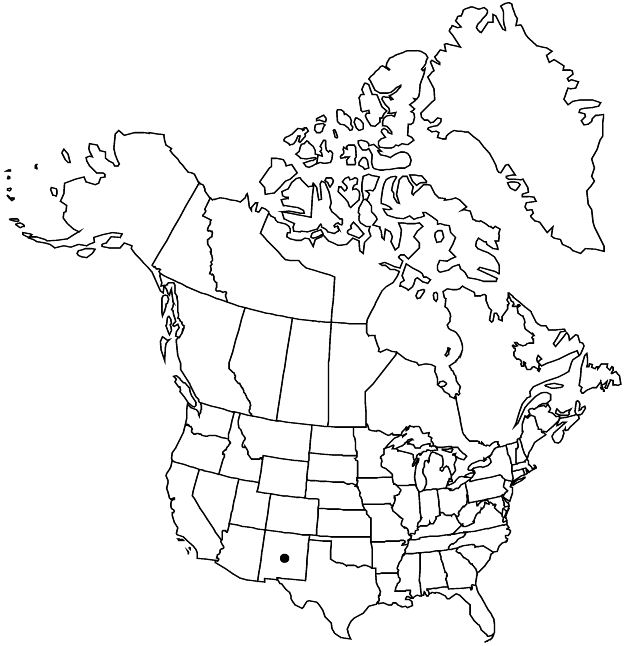Potentilla sierrae-blancae
in P. A. Rydberg, Monogr. N. Amer. Potentilleae, 2: 57, plate 18, figs. 3–5. 1898.
Stems 0.2–1 dm, lengths 1–1.5 times basal leaves. Basal leaves palmate, 2–8 cm; petiole 0.5–5 cm, straight hairs sparse to abundant, sometimes absent, ± appressed, 2–3 mm, usually ± stiff, cottony hairs absent, glands absent; leaflets (3–)4–5, at tip of leaf axis, separate, proximal pair separated from others by 0(–1) mm of leaf axis, central leaflets narrowly cuneate-oblanceolate, 0.8–2.2 × 0.2–0.5 cm, petiolules 0(–1) mm, less than distal 1/4 of margins incised 1/2–3/4 to midvein, teeth 1(–2) per side, ± separate, 1–2 mm, surfaces similar, green, straight hairs mostly absent (except on margins), appressed, 1–2 mm, stiff, cottony hairs absent, glands absent, rarely sparse. Inflorescences solitary flowers or 2–3-flowered. Pedicels 1–4 cm. Flowers: epicalyx bractlets narrowly to widely elliptic-ovate, 2–3.5 × 1–1.5 mm; hypanthium 3–5 mm diam.; sepals 3–5 mm, apex obtuse to acute; petals 5–7 × 4–6 mm; filaments 1–2 mm, anthers 0.4–0.8 mm; carpels 5–20, styles 2 mm. Achenes 1.5 mm, smooth.
Phenology: Flowering summer.
Habitat: Windswept barren ridges, subalpine grasslands, rock outcrops
Elevation: 2400–3700 m
Discussion
Of conservation concern.
Potentilla sierrae-blancae is restricted to the White Mountains, Lincoln and Otero counties. P. A. Rydberg (1898, 1908d) and B. C. Johnston (1985) placed P. sierrae-blancae in sect. (or group) Aureae; the species fits well in sect. Concinnae, combining the few-flowered inflorescence of P. angelliae with the tridentate leaflets of P. bicrenata and P. johnstonii.
Selected References
None.
